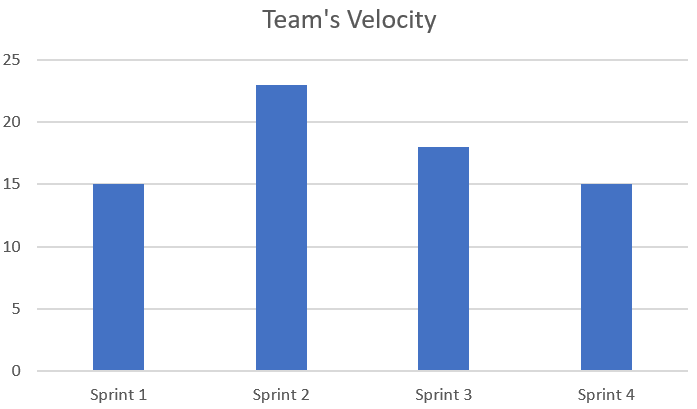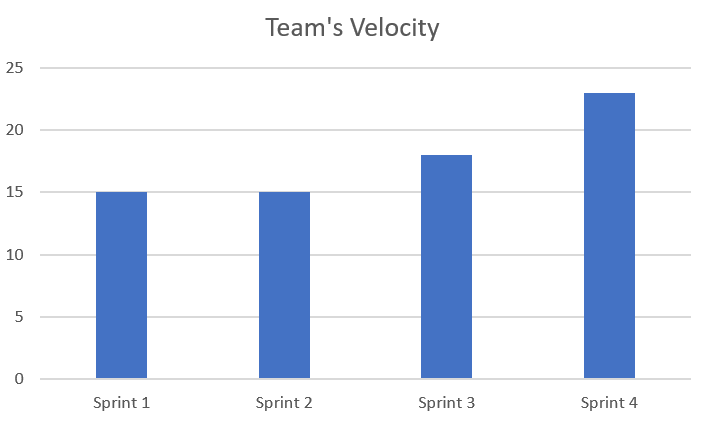Summer, holidays….Help Agile!
During the summer, the team works at a reduced capacity almost all the time. Whether for a day or two or for weeks, it is normal for different members to go on a leave. However, this should not disturb the work pace and the team must find how to create realistic expectations in business stakeholders. We will share with you two approaches you can apply with your team in this situation.
04 Aug 2020August is the month of the summer holidays. Usually the team works with reduced capacity. For business, however, there is no rest. The teams should continue delivering with the same frequency.
Of course, the delivered quantity cannot be the same compared to the normal performance of the team. It is rather logical and normal, though. It is crucial the sprints to be carefully planned especially in case of team member absences.
First let's take a look at how we usually plan a Sprint, ie. when the team is in its entirety.
Usually Agile teams estimate their work in "Story Points". To commit how many "Story Points" will they produce in the next Sprint, they base on the Previous Velocity, i.e. the amount of Story Points that was made in the previous sprints. This technique is known as “Yesterday’s weather”.
Before moving on, let me mention that adaptive planning and predictability in Agile environment is always based on history data. In the case of Sprint planning, the team needs its Previous Velocity. Usually the past period for which this information is taken is 3 months and most often it actually is 6 sprints.
Let's take an example with a team that has done the previous 4 sprints: 15 SP, 23 SP, 18 SP, 15 SP. In this case the average Velocity is (15+23+18+15)/4 = 17.75. This is between 17 and 18 SP and as the trend is towards reduced Velocity, the team will commit to 17 SP. If the graphics looked like the one below, the team would take on 18 SP.
When team members do not change often and no one is absent, with good coaching and a consistent approach to estimation, the team manages to achieve the desired predictability. The problem comes when the team members change or someone from the team is absent.
How to plan when we expect changes in the composition of the team
During the summer, the team works at a reduced capacity almost all the time. Whether for a day or two or for weeks, it is normal for different members to go on a leave. However, this should not disturb the work pace and the team must find how to create realistic expectations in business stakeholders.
We will share with you two approaches you can apply with your team in this situation. Which one is better? No two teams or projects are the same. Also there is no magic wand that can solve all of our problems. As you will see, each of these approaches has its drawbacks and how you approach them is up to you.
- The first approach is for fancier of exact sciences - equating Story Points to man-days. For example, we have a team of 5 people who make an average of 20 Story Points for a two-week sprint (10 working days). This means that the team makes 20 Story Points in 50 man-days, i.e. 20/50 = 0.4 Story Points for one man-day. If we assume that one person will be absent for 4 working days and another will be absent for 7 working days, this means that we have to remove 11 man-days x 0.4 Story Points = 4.4 Story Points. Accordingly, the team can commit to 15 SP. Of course, there are reasons for this approach to fail, and here we share two of them:
- We don't take into account how senior the people who will be absent are and if these people are more senior that others, generally produce more work, then they can disrupt the pace much more than planned. The opposite is also true.
- A high-performing self-organizing Agile team works like a a well-functioning machine and the absence of two team members will require much more time for self-organization from other team members and they could not manage to deliver proportionally.
- The second approach is the complete opposite of the first - we can always count on our "gut feeling". The fans of the exact sciences will immediately find 100 reasons why this will not work. But anybody who has worked in a cohesive, well-selforganized team knows how powerful this tool is. Based on the available information during sprint planning meeting and based on a well-defined requirements, ask the team how confident they feel they can complete for example the first 5 things of the Product Backlog. If the answer is Yes, ask them about the 6th item from the Product Backlog without any pressure. If there is hesitation from the team - do not insist. It is better for the team to focus on 5 things, to get them done, than at the end of the sprint, to have 3 completed and 3 in progress.
So, we can say that there is no right rule or universal solution. The more important thing is to adapt to the situation and consider this period as a rather different one compared to the rest of the year.
Summer is definitely a challenge due to many reasons. On the one hand, paid leaves are mandatory. From the other hand, the employees who expect their upcoming holidays become less concentrated and focused. However, business still demands results. Considering that we hope our advises can help you passing this sensitive period of the year, because we know how critical Agile can be during the summer.
Author Teodora Todorova
Този сайт използва бисквитки за аналитични цели, персонализирано съдържание и реклами. Ако продължите да го разглеждате, вие се съгласявате с използването на бисквитки.


